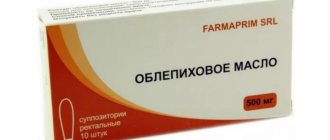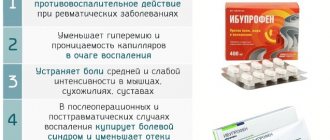Compound
The release form of the psychotropic drug is tablets.
Contour cellular packages contain 10 units.
A cardboard package contains 5 blisters. It is also possible to pack in glass jars of 50 pcs.
One tranquilizer tablet includes:
- medazepam, on the basis of which the drug was developed (10 mg);
- milk sugar (69 mg);
- potato starch (20 mg);
- calcium stearate (1 mg).
Pharmacology
The active component is used in pharmacology due to the following actions:
- muscle relaxant;
- anxiolytic;
- thymoleptic (mild);
- antiepileptic.
The sedative and hypnotic effect is present to an insignificant extent, which classifies the drug in medicine as a daytime tranquilizer.
Under the systemic influence of medazepam, the following result of drug therapy is achieved:
- psychoneurological tension is relieved;
- anxiety, feeling of fear disappears;
- normal emotional behavior is restored;
- Excessive fussiness and motor agitation disappear;
- the state of the autonomic nervous system is stabilized.
Price
You can purchase Mezapam if you have a prescription sheet certified by the seal of a medical institution and the attending physician.
The cost of one package is 850-1380 rubles .
You can buy a tranquilizer in Moscow in the chain of pharmacies Rigla, ANSImed, Zhivinka, etc. The psychotropic drug is almost always available in the online pharmacy.
Indications for use
Mezapam tablets are prescribed exclusively by doctors (neurologists, psychiatrists) for the following manifestations:
- unreasonable irritability, overexcitement;
- psychopathy accompanied by feelings of anxiety;
- with menopausal syndrome;
- with withdrawal syndrome;
- mental lability;
- nervous tension, which causes physical pain or weakness.
The drug is used in the treatment of “school” neuroses, as a prophylaxis for migraine attacks.
When is Mezapam necessary?
Mezapam is a tranquilizer with an anxiolytic effect that has a rapid and long-lasting effect. It helps against neuroses and psycho-emotional disorders, accompanied by increased excitability, panic attacks, anxiety and other symptoms.
The drug is considered a safe drug, has a small list of contraindications and side effects, but if taken uncontrolled, it can cause dependence and withdrawal symptoms. Treatment with Mezapam quickly normalizes the activity of the nervous system, but requires extreme caution and compliance with medical recommendations.
Contraindications
Before you start taking tablets, you should read the instructions that are included in each package of the pharmacological product. The contraindications section deserves special attention.
The drug developers have identified the following factors that make the use of Mezapam impossible:
- autoimmune neuromuscular disease (fatigability of a particular muscle group);
- liver/kidney dysfunction (acute phase of the disease);
- stopping breathing during sleep (apnea);
- addiction to bad habits and drugs;
- age threshold (children under 10 years old);
- pregnancy period (first trimester), lactation;
- allergy to one or more components of the drug.
There are other categories of patients that require special attention when prescribing a tranquilizer:
- Pregnant women.
- People who have been diagnosed with kidney or liver failure.
- Elderly age.
- Patients with organic lesions of the central nervous system.
- Confirmed diagnosis of Friedreich's disease.
- Increased IOP (intraocular hypertension).
Analogues and substitutes
There are no exact analogues of Mezapam, since only this drug is made on the basis of medazepam. The list of the closest drug substitutes includes benzodiazepine tranquilizers, which have a similar mechanism of action. This is a whole group of drugs that include drugs based on diazepam, lorazepam and other substances.
| A drug | Active substance | Manufacturer | price, rub. |
| Diazepam | Diazepam | Interchem, ODO, Ukraine | 260 |
| Phenazepam | Bromodihydrochlorophenylbenzodiazepine | Valenta Pharmaceuticals PJSC, Russia | 120 |
| Grandaxin | Tofisopam | Egis, Pharmaceutical Plant, JSC, Hungary | 1200 |
| Lorazepam | Lorazepam | Tarkhominsky Pharmaceutical | 160 |
| Xanax | Alprazolam | Pfizer Menufecchuring Belgium N.V., Belgium | 280 |
| Nozepam | Oxazepam | Olainfarm JSC, Latvia | 170 |
Benzodiazepine derivatives have a similar mechanism of action and indications for use, but may differ in the characteristics of their effects. Before replacing one drug with another, you should consult your doctor, and during therapy strictly follow the instructions and medical recommendations. This is especially true for the elderly, children and patients with concomitant disorders.
Side effects
During the study of the psychotropic drug, side effects were identified.
Don't worry about short-term symptoms:
- weaknesses;
- drowsiness;
- disorientation;
- slight headache.
Unpleasant sensations disappear 1-3 days after the start of therapy.
The attending physician should be notified of more serious manifestations:
- tachycardia, sudden change in blood pressure;
- depression of the respiratory center;
- allergic reaction;
- pain accompanied by spasms;
- alveolar hypoventilation.
If necessary, the doctor will select another more appropriate treatment method or recommend other medications.
Overdose
Mezapam tablets are taken strictly according to the regimen developed by the doctor in the specified dosage.
If the amount of active substance is exceeded, signs of poisoning may appear.
In case of convulsions, depressed breathing, ataxia, muscle hypotonia and other characteristic symptoms, measures should be taken to urgently remove toxins from the body.
To do this you need to do the following:
- rinse the stomach;
- take any sorbent, laxative;
- measure blood pressure, body temperature;
- monitor heart rate.
Instructions for use
The tablets are taken orally one hour before meals or 1.5 hours after meals. Take the medicine with purified water (100-150 ml).
The treatment regimen involves taking a tranquilizer 2-3 times a day with a gradual increase in dosage.
For the first 2-5 days it is recommended to take 5 mg of the medicine, then over the course of 2-5 days the single dose is increased to 10 mg.
When undergoing treatment at an outpatient clinic, doctors prescribe 5 mg of Mezapam for morning and afternoon doses, and 10 mg for evening doses. The maximum daily amount should not exceed 40 mg (in rare cases, the amount increases to 60 mg, but subject to inpatient treatment).
Daily norms for patients included in a separate category requiring careful use of a tranquilizer:
- elderly people – 20 mg;
- teenagers – 10-20 mg;
- children 10 years and older – 2 mg per 1 kg of body weight per day.
The duration of the course of drug therapy is determined individually.
MESAPAM
Dosage form:
granules for the preparation of suspension for oral administration [for children], tablets
Pharmachologic effect:
A “daytime” anxiolytic drug (tranquilizer) from the group of benzodiazepines, it has anxiolytic, muscle relaxant and antiepileptic effects, and has a slightly pronounced thymoleptic effect. Interacts with benzodiazepine receptors of the limbic system and the ascending activating formation of the brain stem, promotes the opening of Cl channels, which leads to an increase in the inhibitory effects of GABA in the central nervous system. Eliminates anxiety, fear, psychoneurotic tension, general motor agitation, excessive fussiness, restores emotional behavior and has a stabilizing effect on the autonomic nervous system. Restores a critical assessment of one’s own illness. Antiepileptic, central muscle relaxant, sedative and hypnotic effects are less pronounced than those of typical benzodiazepine anxiolytic drugs (tranquilizers).
Indications:
Neuroses, psychopathy with anxiety, agitation, nervous tension, irritability, migraine (prevention of attacks), menopausal syndrome, alcoholism (withdrawal syndrome). Children have “school” neuroses, mental lability, and excessive excitability.
Contraindications:
Hypersensitivity, myasthenia gravis, acute liver and kidney diseases, sleep apnea, alcohol and drug addiction, pregnancy (first trimester), lactation period, children (up to 10 years). With caution. Hepatic and/or renal failure, pregnancy, spinal and cerebellar ataxia, intraocular hypertension, organic lesions of the central nervous system, respiratory failure, old age, general severity of the condition.
Side effects:
From the nervous system: drowsiness, headache (the first reaction to administration, disappearing after reducing the dose), weakness, dizziness, stunnedness, anterograde amnesia, depression, confusion, dysarthria, ataxia (in elderly patients and patients with mental retardation), paresis accommodation; in elderly patients and children - loss of orientation, disinhibition, aggressiveness. From the cardiovascular system: tachycardia, decreased blood pressure. From the digestive system: dry mouth, dyspepsia, increased activity of “liver” transaminases. From the respiratory system: depression of the respiratory center (with airway obstruction or brain damage), alveolar hypoventilation (in patients with COPD when taken in high doses). Other: decreased potency and/or libido, dysmenorrhea, urinary retention, spasm of the vocal cords, chest pain, withdrawal syndrome, paradoxical reactions, drug dependence (especially with long-term use), allergic reactions. Overdose. Symptoms: feeling of fatigue, catalepsy, ataxia, tachycardia, decreased blood pressure, muscle hypotension; in severe cases - coma, convulsions, respiratory depression. Treatment: gastric lavage, taking activated charcoal and laxatives, intravenous fluid infusion, monitoring respiratory rate, heart rate, blood pressure and body temperature, general measures aimed at maintaining the basic vital functions of the body, and preparing all the conditions necessary for emergency care with the possible development of airway obstruction. Forced diuresis and hemodialysis are ineffective.
Directions for use and dosage:
Orally, before meals, starting with 5 mg 2-3 times a day, gradually increasing the dose to 30 mg/day (if necessary, up to 40 mg/day). In outpatient settings, it is recommended to take 5 mg in the morning and at noon and 10 mg in the evening. The maximum daily dose for adults is 40 mg (in outpatient settings) and 60-70 mg (in hospital settings). Duration of the course - no more than 2 months, repeated course - after a break (at least 3 weeks). Elderly people and adolescents are prescribed 10-20 mg/day, children a single (daily) dose: at the age of 1-2 years - 1 mg (2-3 mg), 3-6 years - 1-2 mg (3-6 mg), 7-10 years - 4-8 mg (6-24 mg) and over 10 years - 6-10 mg (20-60 mg). When treating alcoholism, 30 mg/day is prescribed for 1-2 weeks.
Special instructions:
During the treatment period, it may cause difficulty remembering and learning; you should refrain from drinking ethanol. When treating and preventing the development of withdrawal syndrome, withdrawal is carried out gradually. Prescribed for a short time, with long-term use - the formation of drug dependence (if the dose is excessively exceeded - the development of tolerance and mental dependence). During the treatment period, care must be taken when driving vehicles and engaging in other potentially hazardous activities that require increased concentration and speed of psychomotor reactions.
Interaction:
When administered together, there is a mutual enhancement of the effects of ethanol, narcotic analgesics, drugs for general anesthesia, centrally acting muscle relaxants, barbiturates, sleeping pills, and antidepressants. When taking centrally acting antihypertensive drugs, beta-blockers or anticoagulants simultaneously, the result of the interaction is unpredictable. Inhibitors of microsomal oxidation (cimetidine) enhance and prolong the effect, inducers (barbiturates and phenytoin) weaken it. Oral contraceptives may delay the metabolism of medazepam, resulting in an increase in the intensity and duration of its action. Reduces the effect of levodopa, enhances phenytoin (inhibition of the metabolism of the latter).
Interaction
When using Mezapam tablets, it is worth considering their effect on other substances:
- In combination with medazepam, the effect of the following drugs is mutually enhanced: muscle relaxants, drug-containing analgesics, anesthetics, antidepressants, hypnotics. Simultaneous use with drugs and ethanol leads to the same consequences.
- Combinations of tranquilizers and anticoagulants, beta-blockers, and antihypertensive substances can lead to unpredictable results.
- The effects of medazepam are weakened by inducers, and inhibitors, on the contrary, enhance the pharmacological effect.
- Simultaneous use of a tranquilizer and oral contraceptives is fraught with a prolonged and enhanced effect of the psychotropic substance.
- Medazepam inhibits the metabolism of phenytoin and reduces the effect of levodopa.
Drug interactions
It is not recommended to use Mezapam simultaneously with antihypertensive drugs, cardiac drugs and anticoagulants, as the results of the interaction can lead to unpleasant consequences. When taking opioid analgesics, anesthetics and muscle relaxants, serious depression of central nervous system functions is possible. Oral contraceptives inhibit the metabolism of the active substance, which can lead to an increase in the therapeutic effect and unwanted reactions of the body.
special instructions
Mezapam is dispensed in accordance with the resolution of the Ministry of Health of the Russian Federation by prescription .
You should not combine taking psychotropic tablets with alcohol-containing drinks . The effect of the active substance extends to the functionality of the brain, which can cause problems with memorization or learning. Alcohol increases side effects, causing additional damage to the kidneys and liver.
Treatment of withdrawal syndrome is carried out with floating doses, which are gradually reduced towards the end of the course of treatment. This is necessary to prevent withdrawal syndrome.
The duration of taking the tranquilizer is determined individually; it cannot be exceeded, nor can the dose be increased. Otherwise, the patient becomes addicted to the drug before the manifestation of dependence syndrome.
It is not recommended to combine the use of psychotropic medications with work that requires increased attention and caution. Even a mild altered state can cause injury or a dangerous situation.
A daytime tranquilizer can be prescribed to pregnant women in the 2nd and 3rd trimester, but under constant supervision of the attending physician, and only in medically justified cases.
The same approach is used when selecting a psychotropic drug for children.
Composition and features
The drug belongs to the pharmacological group of anxiolytics. The main active ingredient of the drug is medazepam. Available in the form of tablets, granules and a substance for oral administration with different concentrations of the active component.
Mezapam is considered a “daytime” tranquilizer, as it does not cause drowsiness or decreased performance.
The tablets contain 10 mg of medazepam and are intended for the treatment of psycho-emotional disorders in adults. Granules and solution are usually prescribed to children in individual dosages.
The cost of the drug is about 1000 rubles, it is available in pharmacies with a prescription, and the shelf life at room temperature is 3 years.
Patient reviews
Yana, 30 years old:
Mom had a very difficult time with menopause. At that moment I was working as a nurse in a clinic. She offered help to a loved one and made an appointment with a neurologist. After the examination, medications were prescribed, among which was Mezapam. The mother’s mental state stabilized after taking a tranquilizer for a week: the quality of sleep improved, excitability and irritability disappeared. The medicine completely coped with the task.
Vladimir Vitalievich, 49 years old:
After the accident at the plant, I began to suffer from panic attacks. A feeling of anxiety and isolation appeared for no reason. As a result of nervous experiences, other health disorders began to appear in a chain reaction: insomnia, decreased appetite, failure of the autonomic system. After much persuasion, my wife signed me up to see a psychotherapist. One of the prescribed drugs was the tranquilizer Mezapam.
I took it for 3 weeks, but improvements became noticeable after 5-6 days. The psycho-emotional state returned to normal, good healthy sleep appeared, and fears disappeared.
Analogs
Pharmaceutical companies produce several drugs that are based on the same active substance as Mezapam. Among them: Rudotel and Nobritem .
Other tranquilizers that do not contain medazepam have similar pharmacological properties:
- Alprazolam;
- Diazepam;
- Zolomax;
- Ipronal;
- Xanax;
- Sibazon.
It is prohibited to independently replace medications or make adjustments to the treatment regimen due to the high risk of harm to health.
Reviews and opinions of patients
Reviews from patients who took Mezapam to eliminate symptoms of psycho-emotional disorders are generally positive. The drug is highly effective and mild, as well as the absence of adverse reactions. However, some patients said that taking it causes mild lethargy and the return of symptoms even after completing the full course of treatment.









